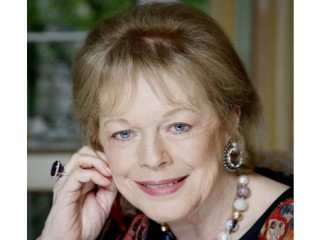
Lady Antonia Fraser biography
Date of birth : 1932-08-27
Date of death : -
Birthplace : London, England
Nationality : English
Category : Famous Figures
Last modified : 2011-09-13
Credited as : biographer, mystery novelist, historian
The British writer Lady Antonia Fraser was a popular biographer, historian, and mystery novelist.
Lady Antonia Fraser was born on August 27, 1932, in London, England. She was the daughter of the seventh Earl of Longford, Francis Pakenham (born 1905), a statesman who had several cabinet posts under Labor Prime Minister Harold Wilson. He was also a famed public crusader and writer. Her mother was the Countess of Longford, Elizabeth Pakenham (born 1906), the author of a series of popular biographical studies of Queen Victoria, Wellington, Churchill, the Queen Mother, and Queen Elizabeth II.
It was natural that Antonia should become a writer, coming from a family of writers, the "literary Longfords." As well as her father and mother, Lady Antonia's sister Rachel Billington was a novelist; another sister, Judith Kazantzis, was a feminist poet; a brother, Thomas Pakenham, was an historian; and her two eldest daughters, Rebecca and Flora, were both writers.
Lady Antonia was educated at the Catholic convent and Oxford (Lady Margaret Hall, BA 1953). She converted to Catholicism in her teens, following her parents' lead, and at the age of 23 she married Sir Hugh Fraser, a handsome Catholic, Scots nobleman and war hero with the SAS (Special Air Services). He was 15 years her senior.
Sir Hugh Fraser had been a Conservative member of Parliament for Stafford since 1945 and had served in Conservative cabinets. They lived in London (when he was at the House of Commons) and in summer on an island in Inverness-shire, Scotland, owned by him. They had three sons and three daughters, but their marriage was dissolved in 1977. Already she was living with Harold Pinter, the playwright, whom she married in 1980. Her first husband died of cancer in 1984.
Her first job was in George Weidenfeld's publishing house as a general assistant. Lord Weidenfeld was a family friend and had Lady Antonia editing the expletives from Saul Bellow's The Adventure of Augie March for the British market. She published several juvenile items and A History of Toys (1966) before her major work, Mary, Queen of Scots, in 1969, which won the J. T. Black Prize for biography. Her mother, Lady Longford, had won the same prize five years before with a biography of Queen Victoria (1964).
Mother and daughter proceeded to carve up English history between them: Lady Longford taking the 19th century, Lady Antonia taking the 17th century. When Antonia wrote Mary, Queen of Scots she was pregnant with her fifth child. Two more biographies, Cromwell, Our Chief Among Men (1973) and King James: VI of Scotland, I of England (1974), came from her pen when she was still married to Hugh Fraser, and one biography, King Charles II (1979), between marriages. In the meantime she edited a series of writings: Lives of the Kings and Queens of England (1975), Scottish Love Poems (1975), Love Letters: An Anthology (1976), Heroes and Heroines (1980), Mary, Queen of Scots: An Anthology of Poetry (1981), and Oxford and Oxfordshire in Verse (1982).
The earlier books, from the historian's point of view, were more researched than the later works, may be because she was thinking of becoming a mystery novelist. Her first book in this style, Quiet as a Nun, appeared in 1977. Her heroine, Jemima Shore, a television reporter, is intelligent and fashionable. The novel is set in a convent and the hysterical nuns are brought under control by Jemima with a sangfroid style and frank manner. In the second novel, The Wild Island (1978), a clique of crazy royalists on a Scottish island is mixed up with a motley crew, including a grandiloquent member of Parliament (M.P.) and a princess. These novels in their settings are reminiscent of scenes she knew from her own life—a convent and a Scottish island, the royalists, and even an M.P., her first husband. The novels starring Jemima Shore were successful and were televised in England. They were followed by A Splash of Red (1981) and Cool Repentance (1982).
More academic in character was her later book, The Weaker Vessel (1984), a volume about 17th-century women in England. It was based on primary documents rather than on other work by historians, and her organization is accomplished. Some reviewers of the book seemed to think that it was anecdotal and lacking analytical skills. The Weaker Vessel contains a hundred stories of mainly upper-class women and does not lend itself to theorizing, at least not according to Antonia Fraser. The limited emancipation of 17th-century women due to the influence of Oliver Cromwell peaked in mid-century. Women's status was set back after his death.
Fraser followed The Weaker Vessel with the mysteries Oxford Blood (1985), Jemima Shore's First Case (1986), and Your Royal Hostage (1987); Boadicea's Chariot: The Warrior Queens, in the United States The Warrior Queens;the mystery The Cavalier Case (1990); and The Wives of Henry VIII (1992). A more recent Fraser history is Faith and Treason: The Story of the Gunpowder Plot, an account of the 1605 conspiracy led by Guy Fawkes to blow up Parliament with King James I inside.
While Fraser has been justly celebrated for her literary prowess, her beauty has garnered much attention as well. "I suppose one's vanity is pleased by it, but if I could be born again with more beauty or more brains, I'd take the brains," Fraser is quoted in an article by Polly Samson appearing in Harper's Bazaar, November 1992, "Once you are called a beauty, then you are either an ex-beauty, a fading beauty, or 'still surprisingly beautiful.' But at least one gets more shortsighted, so when you remove your spectacles to put on makeup, the image in the mirror is pleasingly blurred."
















